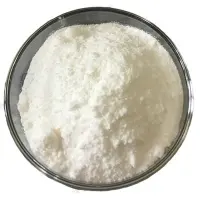-
Categories
-
Pharmaceutical Intermediates
-
Active Pharmaceutical Ingredients
-
Food Additives
- Industrial Coatings
- Agrochemicals
- Dyes and Pigments
- Surfactant
- Flavors and Fragrances
- Chemical Reagents
- Catalyst and Auxiliary
- Natural Products
- Inorganic Chemistry
-
Organic Chemistry
-
Biochemical Engineering
- Analytical Chemistry
-
Cosmetic Ingredient
- Water Treatment Chemical
-
Pharmaceutical Intermediates
Promotion
ECHEMI Mall
Wholesale
Weekly Price
Exhibition
News
-
Trade Service
In the chemical industry, one of the key components of the supply chain is the production of raw materials or feedstock, which is then transformed into a wide range of downstream products through various chemical processes.
In this article, we will focus on the upstream and downstream products of Mizoribine, an organic compound that is primarily used as an intermediate in the production of various chemicals.
Upstream Products of Mizoribine
Mizoribine is an organic compound that is derived from the reaction between formaldehyde and anthraquinone.
The upstream products required for the production of Mizoribine include formaldehyde and anthraquinone.
Formaldehyde is a colourless gas that is used as a preservative and is a common component of embalming fluid.
Anthraquinone is a yellow or green crystalline solid that is used as a dye and as an intermediate in the production of a range of other chemicals.
Downstream Products of Mizoribine
Mizoribine is primarily used as an intermediate in the production of various chemicals.
The downstream products that can be produced from Mizoribine include a range of chemicals such as dyes, rubbers, polymers, and pharmaceuticals.
One of the primary downstream products of Mizoribine is the production of the dye Methyl Orange.
Methyl Orange is a red crystalline solid that is used as a food additive and in dyes and pigments.
Other downstream products that can be produced from Mizoribine include various types of rubbers and polymers.
For example, Mizoribine can be used in the production of polyester and polyurethane, which are widely used in the manufacturing of textiles, coatings, and adhesives.
Additionally, Mizoribine can be used in the production of pharmaceuticals, such as anti-inflammatory drugs and anti-malarials.
Production of Mizoribine
The production of Mizoribine typically involves several steps, including the synthesis of formaldehyde and anthraquinone, followed by their combination in a reaction that yields Mizoribine.
The production of formaldehyde typically involves the reaction of methanol with hydrogen in the presence of a catalyst, such as palladium.
The production of anthraquinone typically involves the reaction of benzoic acid with sodium hydroxide, followed by treatment with chloroform and sulfuric acid.
Once the formaldehyde and anthraquinone are synthesized, they are combined in a reaction that involves the formation of a complex between the two compounds, followed by reduction of the complex to yield Mizoribine.
The production of Mizoribine is typically carried out in a chemical plant using specialized equipment and under the supervision of trained personnel.
Market for Mizoribine
The market for Mizoribine is primarily driven by demand from the chemical industry, particularly from companies that produce dyes, rubbers, and pharmaceuticals.
The demand for Mizoribine is expected to grow in the coming years, driven by increasing demand for chemicals and the increasing use of Mizoribine as an intermediate in the production of various chemicals.
Conclusion
Mizoribine is an organic compound that is primarily used as an intermediate in the production of various chemicals.
The production of Mizoribine typically involves the synthesis of formaldehyde and anthraquinone, followed by their combination in a reaction that yields Mizoribine.
The downstream products of Mizoribine include a range of chemicals such as dyes, rubbers, polymers, and pharmaceuticals.
The market for Mizoribine is expected to grow in the coming years, driven by increasing demand for chemicals and the increasing use of Mizoribine as an intermediate in the production of various chemicals.







